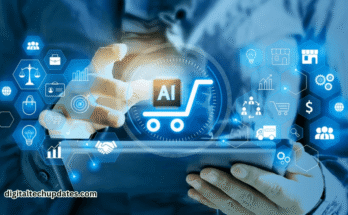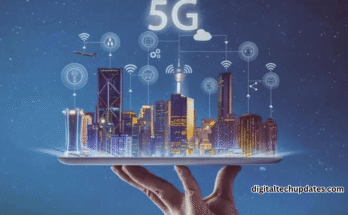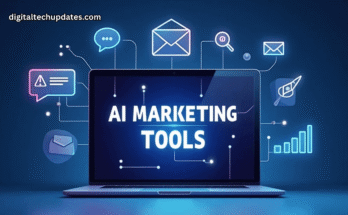Have you heard of the expressionssalesfunnel ,salesfunnel ,conversion funnelor similar? Those of us who move in the world ofdigital marketingare used to different concepts that often appear without explanation and require us to investigate.
If this is your case and you want to learn about thesales funnel(what it is, what it is for and how to create one for your brand) you are in the right place.
Read on and I’ll tell you everything you need to know about thisinbound marketingstrategy .
What is a sales funnel
Thesales funnelis the representation of thedifferent stages that a buyer goes throughfrom when they experience the need or desire to acquire a product/service until they make the purchase andhow they interact with the brandsat each moment of this process.
The purpose of thesales funnelas a strategy is to accompany and guide the user from the moment they discover your brand, to increase the chances that they will make a purchase and, better yet, become loyal customers.
In this sense, it is a tool whose logic consists of:
- Attract unknown users
- Convert them into leads(a ‘lead’ is a user who has left you their contact information of their own free will)
- Turn them into customers
- Retain them and keep them buying
Most brands focus on the first stage of the funnel, that is, they invest their energies only in increasing traffic levels. However, if the following phases are neglected, it may happen that the visits do not translate into sales, and then you discover that your traffic goes up but your income does not.
Moreover, it is estimated that almost 90% of the traffic that enters a website leaves it without buying and without leaving their data. A waste, don’t you think?
The sales funneltechnique aims to change that figure and thinks of users from the moment they arrive at the website until they make a purchase (and even after they have purchased). It is aware of the entire client process and retains it until the end.
What is the sales funnel for?
As you may have noticed, the ultimate goal of this strategy isto increase sales, but its application generates many other benefits.
In particular, it encourages the construction of avalue link between the brand and users. This increases the chance that they will become loyal, satisfied customers and recommend you to others.
Profits
- Thecontact information of the visitorsis obtained : you will know who is interested in your brand and how to contact them.
- You createbetter sales opportunities: you can recontact leads with personalized messages and exclusive offers.
- You establish arelationship of trust with users: they see your brand’s interest in offering them value, which improves interaction,engagementand image.
- You generate greatervisibilityand improve yourreputation. You become a benchmark in your field.
- You communicate more clearly what differentiates you from the competition and why your product/service is the best solution to user problems.
- You canplan your contentand offer users what they need at each stage of the funnel.
- You exert greaterinfluence on the purchase decision ofcustomers.
- You carry out a post-purchase follow-up andretain customers.
Stages or phases of the funnel
Thesales funnelfits the natural buying process that we all follow as consumers. In general, the only variable that changes is time: some people think more before buying, others are more impulsive, some purchases require more thought, like a house or a car, while others are more automatic, like those at the supermarket…
However, all processes follow3 key steps:
- The need or problem appears
- Different options in the market are investigated and considered
- decide and buy
Logical, right?
Now let’s move on to the next question: how does the sales funnel fit into this process?
Phase 1: Interest
When users experience a need, problem to solve, or simply a desire, brands should appear as an available option. You want yours to be there, visible and ready to tap into potential customers’ intent.
In addition to appearing, for example, through a good position in search engines or in an Instagram advertisement, you mustarouse interestwith good titles, mega descriptions and eye-catching images.
And if you get the user to enter your website, make sure they find interesting content that responds to their demand. The initial impact will make the difference between a user who stays and one who leaves after a few seconds.
Strategies to apply in this phase:
- SEO:a good way to appear before the potential client is to applySEOtechniques to have a good position in Google. In this way, when faced with a search related to your product/service, you have a high chance of achieving organic traffic and moving on to the second phase of thesales funnel.
- Online advertising:another way to gain visibility and attract traffic is through advertising, either on Google to appear as a sponsored result, or on social networks to reach your target audience.
- Content marketing: creating a blog and uploading quality articles, posting videos on YouTube or posts on networks is a good way to capture the interest of customers. If you provide them with valuable information and help them with their concerns, they will trust you more and you have more chances that they will decide to buy from you.
- Buyer persona:For your brand to meet the needs of your potential customers, you have to get to know them as much as you can. What is your ideal client like? Answer this question with as much detail as possible and the process will be much easier.
Something important to keep in mind is that not all your traffic will be made up of users who have just met you. Thesales funnelmakes us reflect on the different stages in which a user can be.
Your visitors can be both first time visitors (cold traffic); that they already know you but haven’t bought from you yet (warm traffic), or that they already bought and are looking at what else you have to offer them (hot traffic). Make sure you have offers and content for each of them.
Phase 2: Conversion
Once the users are on your website and you have already gained traffic, you must convert these visitors (which until now only represent a number) into real people by identifying their data.
To achieve this, you can offer what is known as a “lead magnet”: a gift of value to the user, which they can access at no cost in exchange for leaving their data.
Some of the lead magnets you can offer are ebooks, online events, templates, exclusive content, reports, market research, discounts, trial versions. The important thing is that the user considers it of value and believes that it is worth registering their information in exchange for the benefit.
The more value you provide, the more willing you will be to leave your data. However, do not frame the question as “if you leave me your data, I will give you X in return”. Instead, you can say “sign up for our event here”, “leave us your email and we will send you the ebook”, “sign up for the free trial/discount”.
Strategies to apply in this phase:
- CTA: «call to action», with which you lead the user to perform the action you need. Some examples are “subscribe”, “get free trial”, etc.
- Landing pages:pages intended for users to convert, optimized for it.
- Forms: where you request all the information you need (it can be just the email, other personal data, company data, etc.).
Phase 3: Decision
In this phase of thesales funnel,your brand is already an option for your potential client, but you still have work to do. You must maintain a link and encourage the purchase decision.
To do this, it is key to demonstrate that your solution is the most suitable and stand out from the competition. How to do it? Through some content, such as:
- Comparison with other brands, where you show what you offer that others do not, difference in prices and benefits.
- Facts, Statistics and Claims. Example: “our support team responds to 80% of queries in less than an hour” (a real data from our Neolo team).
- Testimonials: customer opinions, success stories.
- Product Reviews– You can review your own products and also get other websites to review them.
- Trial periods(if it is a service) orvideo demonstrations(if it is a product)
Strategies to apply in this phase
Remember that, at this stage, you already have a database with information on the leads, so you can contact them in a personalized way through email.
The main strategy at this time islead nurturing, a process where the brand maintains a bond with the customer over time. To do this, it uses some sequences of emails.
These emails are sent automatically and with a certain time distance from each other. It is suggested to include the following:
- Welcome email (once the lead has been achieved)
- Sending the content offered in the lead magnet
- Discount or promotion offer
- Suggestion of products/services in a personalized way
- Mental triggers such as urgency and scarcity (“just for today”; “few left”)
Does this ensure the sale? No, but it certainly increases the chances of it happening. The emails must be designed in such a way that the client feels that someone is attending him in a personalized way and not that he is being harassed. It should make you want to buy, not spam you.
Phase 4: Sale
Undoubtedly, if you have done things well in the previous steps, this phase will grow because thesalesfunnelaccompanies customers until the end of the process.
Make the purchase simple and can be completed in a few steps, without friction. Offer different forms of payment and the shortest possible time from when the customer pays until he obtains the product/service.
Phase 5: After sales
Although it may seem to you that each purchase is a goal fulfilled, the reality is that the process does not end there.
If you’ve already got a customer, it’s 9 times easier to convince them to keep buying from you than it is to acquire a new customer from scratch. However, this is a process where most companies fail.
They focus on continuing to attract new customers and forget the current ones.
To retain a customer and encourage them to continue buying in the future, you can use the following strategies:
- Satisfaction surveys(get feedback on what you can improve on)
- Gamification programs: games, point cards to get discounts on future purchases
- Referral marketing: affiliate program, benefits for referring you
- Cross selling: offer complementary products (example: if they bought you an agenda, also offer a notebook or notebook).
- Up Selling: offer upgrades or improved versions (if they bought plan 1, increase their functions with plan 2)
Conclusion
I hope you have a clear idea of what thesales funnelis and, more importantly, concrete ideas to create yours and apply it.
Remember that one of the biggest advantages of the funnel is the possibility ofautomatingit . Once you have worked through all the phases, they continue to work automatically and generate sales without much effort.
A final piece of advice: although all the stages of the funnel are important, if your business is recent and you are still trying to make yourself known, it is better to redouble your efforts in the first phases (traffic and lead generation). On the other hand, if you already have many visits but it is difficult for you to close sales, focus on the lead nurturing phases and benefits that drive the purchase decision.




